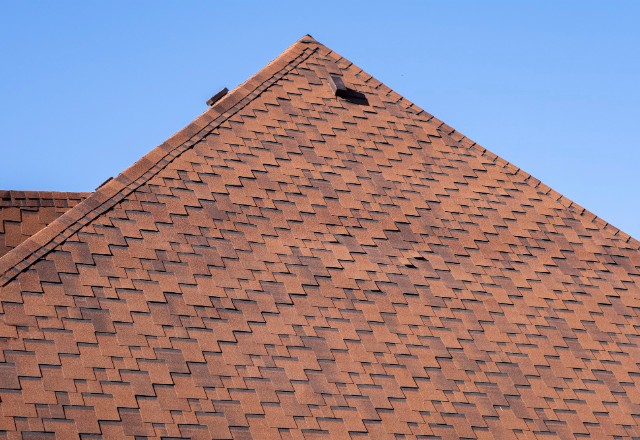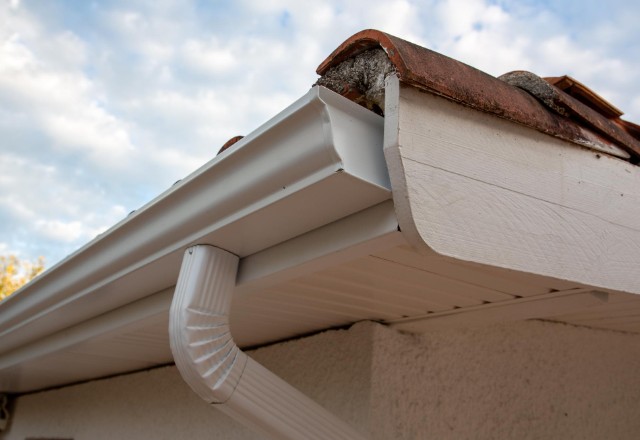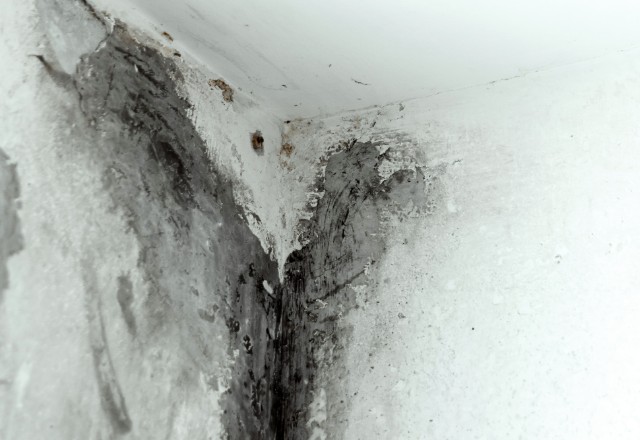As a homeowner, it’s essential to understand the common roofing problems that you may
encounter. Roofing issues can lead to significant damage and expensive repairs if left
untreated. In this article, we will discuss three of the most common roofing problems:
missing shingles, water stains in the house, and excessive amounts of granules in the
downspout. By recognizing these issues early on, you can take necessary measures to
prevent further damage and ensure the longevity of your roof. So let’s dive into the details
and discover how to identify and address these roofing problems effectively.
Disclaimer: This article is intended for informational purposes only and should not be
taken as professional advice. While the information provided in this article is based on
extensive research, it may not be up to date or accurate for your particular situation. It is
important to consult a professional roofing company for any repairs or improvements to
your roof and attic ventilation system. Advance Roofing LLC has been proudly serving the
Spokane, WA area with the highest standard of quality roofing solutions for many years,
and we are always ready to help.
Common Causes of Roofing Problems
Roofing problems can arise from a variety of factors, leading to issues such as leaks,
punctures, cracked sealant, flashing problems, and improper repairs. Understanding the
common causes of these problems is crucial for homeowners to prevent further damage
and ensure the longevity of their roofs.
- One major factor contributing to roofing issues is severe weather
conditions. Hailstorms, heavy rainfall, and strong winds can cause
damage, such as missing shingles or even structural damage. - Additionally, aging roofing materials can lead to problems like cracks
and leaks. Over time, exposure to the elements weakens the roof’s
protective layer, making it more susceptible to damage. - Furthermore, improper installation or workmanship can often result in
roof problems. If the roofing materials are not correctly installed or the
sealant is not applied properly, water can seep through gaps and cause
leaks. Similarly, if flashing, which helps prevent water from entering the
roof at vulnerable areas, is not installed correctly, it can lead to water
infiltration. - Finally, lack of regular maintenance and improper repairs can contribute
to roofing issues. Neglecting routine inspections and failing to address
minor problems can allow them to escalate into more significant issues.
Similarly, poorly executed repairs may not effectively address the root
cause of the problem, resulting in recurring issues.
By understanding these common causes, homeowners can proactively maintain their
roofs and address any issues promptly. Regular inspections, proper installation, and
timely repairs by a professional roofing company can go a long way in preventing roofing
problems and extending the life of the roof.
Problem 1: Leaks
Roof leaks are one of the most common roofing problems faced by homeowners. Leaks
can occur due to various reasons, including damaged or missing shingles, deteriorated
flashing, or gaps in the roof’s structure. When water finds its way into the interior of the
house, it can cause significant damage, such as water stains on walls and ceilings, mold
and mildew growth, and even structural issues. Detecting and addressing roof leaks
promptly is crucial to prevent further damage and expensive repairs. Regular inspections,
proper maintenance, and timely repairs by a professional roofing company can help
identify and fix leaks before they worsen. Additionally, considering the use of high-quality
roofing materials and ensuring proper installation can play a significant role in preventing
leaks and prolonging the lifespan of the roof.
Sources of Leaks
Roof leaks can cause a myriad of issues in a home, leading to damage, costly repairs, and
potential health hazards. Understanding the sources of leaks is crucial in resolving
common roofing problems and ensuring the longevity of your roof.
Poor installation, aging, and damage from severe weather conditions are major
contributors to roof leaks. A poorly installed roof can have gaps, improper flashing, or
inconsistent shingle placement, allowing water to seep through. Over time, aging can
cause the roofing materials to deteriorate and weaken, making them more susceptible to
leaks. Additionally, intense weather conditions such as heavy rain, strong winds, or hail
can damage the roof, creating cracks, holes, or dislodged shingles.
Recognizing the signs of a leak is vital in addressing the problem promptly. Cracks, holes,
or missing shingles allow water to penetrate the roof, leading to leaks. The presence of
moisture or water stains in the attic is a clear indication of existing leakage.
Regular inspections by a professional roofing company are essential to identify and
address sources of leaks. Inspecting the condition of the roof and performing necessary
repairs can prevent leaks from worsening and causing further damage. Additionally,
keeping gutters clean and free of debris ensures proper drainage, reducing the risk of
water buildup and leaks.
Signs You Have a Roof Leak
A roof leak can wreak havoc on your home, causing damage to walls, ceilings, and even
the foundation. It’s vital to be aware of the signs that indicate you may have a roof leak,
so you can address the issue promptly and prevent further damage.
- One common indicator of a roof leak is water stains or mildew on walls
or ceilings. These stains can be yellowish-brown in color and may
spread over time. Another sign is water dripping or pooling in certain
areas of your home, such as puddles forming on the floor or water
dripping from light fixtures. - A musty odor in your home can also be a potential sign of a roof leak.
This smell is often caused by water seeping into your walls or ceiling,
creating the perfect environment for mold and mildew to grow. - Other signs to watch out for include warped or discolored shingles on
your roof. Shingles that are cracked, curled, or have lifted edges are also
indicators that water is penetrating your roof. Additionally, if you notice
wet insulation in your attic or signs of water damage on the inside of
your attic, it could mean you have a roof leak.
It’s essential to address roof leaks promptly to prevent further damage and potential
health hazards. If you notice any of these signs, it’s recommended to contact a
professional roofing contractor to assess and repair the issue. Don’t ignore the signs –
early detection and repair can save you from costly repairs and protect your home.
Problem 2: Asphalt Shingles
Asphalt shingles are one of the most popular roofing materials due to their affordability,
durability, and versatility. However, they are not immune to problems. One common issue
with asphalt shingles is their susceptibility to damage and wear over time. The constant
exposure to the elements, such as harsh UV rays, extreme temperatures, and heavy
rainfall, can cause the shingles to deteriorate. This deterioration often manifests in the
form of cracked, curled, or missing shingles.
When the integrity of the shingles is compromised, water can infiltrate the roof and lead
to leaks. It is essential to address any problems with asphalt shingles promptly to prevent
further damage and ensure the longevity of your roof. Regular inspections and
maintenance, as well as timely repairs or replacements when needed, are crucial in
maintaining the effectiveness and protecting your home from water damage.
Types of Asphalt Shingles
Asphalt shingles are one of the most popular roofing materials due to their durability and
affordability. They come in various types, each with its own unique characteristics and
advantages.
- Organic mat-core shingles are made from a base mat composed of
recycled felt paper, which is saturated with asphalt for waterproofing.
This type of shingle is known for its flexibility and can easily conform to
the shape of the roof. Organic mat-core shingles are also heavier and
thicker, providing extra durability and resistance to strong winds. - On the other hand, fiberglass mat-core shingles have a base mat made
of fiberglass, which is coated with asphalt. These shingles are lighter
and thinner compared to their organic counterparts. Fiberglass mat-core
shingles are fire-resistant and less likely to curl or warp over time. They
also offer better protection against UV rays, keeping the interior of the
house cooler.
Both types of asphalt shingles have similar construction features, including a layer of
asphalt on top for weatherproofing and granules for added durability and aesthetic
appeal. However, the materials used for the base mat and the asphalt coating differ
between organic and fiberglass shingles.
Choosing high-quality asphalt shingles is crucial to ensure maximum protection for the
roof. The type of shingle will depend on the specific needs and preferences of the
homeowner. Consulting with a professional roofing company can help determine the best
type of asphalt shingle for a particular roof.
Common Issues With Asphalt Shingles
Asphalt shingles are a popular roofing option due to their durability and affordability.
However, homeowners may still experience common issues with these shingles.
- One common problem is missing shingles. This can occur due to strong
winds or improper installation. Missing shingles compromise the
integrity of the roof, allowing water to seep in and potentially cause
significant damage to the underlying structure. - Water stains in the house are another issue that homeowners may face
with asphalt shingles. This can be caused by leaks in the roof. When
water enters through gaps or damaged shingles, it can create stains on
ceilings and walls. If left untreated, this can lead to mold growth and
further damage to the interior of the house. - Excessive amounts of granules in the downspout is a problem that can
arise from using low-quality materials or poor installation. Granules
serve as a protective layer for shingles, shielding them from the
damaging effects of the sun’s UV rays. When granules are lost, the
shingles become more susceptible to wear and tear, leading to
premature aging and potential leaks.
To avoid these common issues, it is crucial to use high-quality materials and ensure
professional installation. Low-quality shingles or DIY installation may save money upfront
but can result in costly repairs down the line. Professional installation provides the
expertise needed to properly secure shingles and ensure a watertight roof.

How to Inspect Asphalt Shingles For Damage
Inspecting asphalt shingles for damage is an essential part of maintaining a durable and
watertight roof. Here are the steps to properly inspect asphalt shingles for any signs of
damage:
1. Visual Examination:
Start by visually examining the shingles for any signs of wear and tear. Look for signs of
granular loss, which can be seen as a buildup of granules in the gutters or downspouts.
Check for any cracks or curling in the shingles, as these are indicators of potential
damage.
2. Missing or Loose Shingles:
Inspect the roof for any missing or loose shingles. Missing shingles can leave the roof
vulnerable to leaks and further damage. Ensure that the shingles are properly aligned and
not overlapping incorrectly, as this can also cause issues with water infiltration.
3. Flashings and Seals:
Inspect the flashings and seals around any roof penetrations, such as chimneys or vents.
Damaged or deteriorating flashings can lead to water leaks and should be repaired or
replaced as necessary.
Regular inspections of asphalt shingles are important to catch any damage early on and
prevent further issues. Prompt repairs or roof replacements can save homeowners from
costly repairs and potential water damage to the interior of the house.
By following these steps and conducting regular inspections, homeowners can ensure
the longevity and integrity of their asphalt shingle roofs. It is recommended to hire a
professional roofing company for a comprehensive inspection and any necessary repairs
to guarantee the best results.
Problem 3: Water Stains
Water stains in the house can be a common and frustrating roofing problem. These
stains can appear on ceilings, walls, and even furniture, indicating a potential water leak
from the roof. Water stains are typically caused by roof issues such as missing or
damaged shingles, cracked flashing, or improper sealing around roof penetrations. When
water infiltrates the roof, it can seep into the interior of the house, leaving unsightly stains
and potentially causing further damage to the structure. It is important to address water
stains promptly as they can be a sign of a more significant roofing problem that needs to
be fixed. By identifying and resolving the underlying issue causing the water stains,
homeowners can prevent further water damage and protect their property.
Causes of Water Stains on a Roof
Water stains on a roof can be caused by various factors, with the mineral content in the
water being one of the main culprits. Tap water typically contains minerals such as
magnesium, calcium, iron, or manganese, which can leave behind stains when they come
into contact with the roof surface.
The type of stain that appears will depend on the specific minerals present in the water.
For example, magnesium can cause white stains, while iron can result in reddish-brown
stains. These stains can be unsightly and may indicate the presence of hard water.
Hard water refers to water that has a high mineral content, particularly calcium and
magnesium. When hard water is used for cleaning or irrigation purposes, the minerals
can be left behind on the roof, causing stains over time.
Addressing water stains on a roof involves several steps. Firstly, it is important to
determine the mineral content of the water by conducting a water test. This will help
determine the specific minerals causing the stains. Once identified, appropriate measures
can be taken to address the issue, such as using water softeners or installing a filtration
system to remove the minerals from the water supply.

Signs You Have Water Staining on Your Roof
Water staining on a roof can be a common problem with various causes and signs to look
out for. One of the main factors that can lead to water staining is roof leaks. When there
are gaps or damages in the roof, water can penetrate through and cause discoloration on
the ceiling or walls. Poor attic ventilation is another culprit, as it can trap moisture in the
attic and eventually lead to water staining.
Recognizing the signs of water staining is important for early detection and prevention.
Discolored areas on the ceiling or walls, often appearing as dark or yellowish patches, are
a clear indication. Additionally, water droplets or water stains that have seeped through
the layers of the roof can be observed. Soft or sagging spots on the roof or ceilings may
also suggest an underlying issue of water staining.
To address water staining effectively, it is crucial to identify the source of the problem.
Conduct a thorough inspection for any roof leaks or issues with attic ventilation.
Contacting a professional roofing company for a roof inspection is advisable. Prompt
repairs or improvements to the roof and attic ventilation system can prevent further water
staining and potential structural damage to your home.

Addressing Problems: DIY or Call a Pro?
Addressing roofing problems can be a daunting task, and homeowners often find
themselves facing the decision of whether to tackle the repairs themselves or hire a
professional roofing company. There are advantages and disadvantages to both
approaches.
DIY repairs can save money and provide a sense of accomplishment. With a wide range
of resources available online, homeowners may feel confident in their ability to fix minor
issues such as missing shingles. Additionally, addressing problems promptly can prevent
further damage to the roof and potentially save on costly repairs down the line.
However, there are risks and challenges associated with DIY repairs. Safety concerns,
such as working at height or using unfamiliar tools, can put homeowners at risk of
accidents or injury. Lack of expertise may lead to improper repairs, potentially
exacerbating the problem or causing further damage. In addition, addressing certain
roofing issues, such as structural damage or extensive leaks, may require specialized
knowledge and professional experience.
Hiring a professional roofing company offers several benefits. Roofing professionals have
the expertise to accurately diagnose problems and provide appropriate solutions. With
their experience, they can ensure that repairs are done correctly, minimizing the risk of
future issues. Additionally, roofing professionals have access to high-quality materials
and can provide warranties on their work, offering peace of mind to homeowners.

Conclusion
In conclusion, it is crucial to address common roofing problems such as missing
shingles, water stains in the house, and an excessive amount of granules in the
downspout. Prompt action is essential to prevent further damage to the roof and the
home.
Ignoring these issues can lead to severe consequences. Homeowners have the option to
tackle these problems themselves through DIY methods, but it is important to consider
the risks and challenges associated with it. Proper safety precautions and knowledge are
necessary to ensure that repairs are done correctly without causing further damage.
Alternatively, hiring a professional roofing company offers numerous benefits. Roofing
professionals have the expertise to accurately diagnose problems and provide
appropriate solutions. They have access to high-quality materials and can offer
warranties on their work, providing peace of mind to homeowners.



 509-201-4190
509-201-4190
